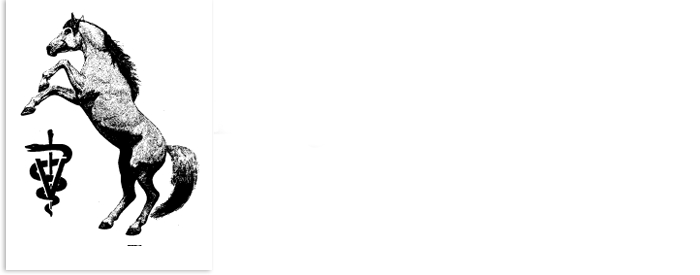Which Leg is Lame? - The Forelimb
Lameness in horses is one of the primary reasons for calling out your veterinarian. It causes wastage of young athletes and forces the ultimate retirement of older horses. Most horse owner know when their horse is lame. However, few are sure which leg is the lame leg.
Recent work definitively showed how to tell which leg is lame. Six sound horses were trained to walk and trot on a high speed treadmill. Then each horse had baseline test on the treadmill. High speed computer cameras from four different perspectives took data from the horses. This was gathered by placing reflective spheres to the horse along the head withers, pole and left and right front legs. High quality video cameras were also placed in front and to the side of each horse on the treadmill.
Next all horses had the left carpus (knee) injected with amphotericn-B to induce a lameness. Data was again gathered on the treadmill and analyzed by computer and by subjective evaluation.
The researches looked at the following possibilities for determining which leg was lame which I will define for you below.
Stance phase- the time the hoof is one the ground as opposed to the time the hoof is in the air during a stride
Forelimb abduction- the perfect horse moves it's leg front to back without any side to side motion. forelimb abduction is measuring the amount of movement away from the body the leg moves during a stride
Stride swing length- this is a measure of the length from front to back that a hoof travels during a single stride.
Carpal (knee) range of motion- This is range of the angle formed by the knee from when the knee is most extended to when the knee is most flexed during a single stride.
Fetlock range of motion- This is the range of the angle formed by the fetlock from when the fetlock is most extended to when the fetlock is most flexed during a single stride.
Withers and Head excursion- the distance up and down the withers and the head travel during a stride.
The results:
Did horses spend less time standing (stance phase) on the lame leg then the sound leg? -NO!
Did horses pull the lame leg out to the side when trotting (forelimb abduction)?- NO!
Did horses shorten their stride on the leg which was lame or the leg that was sound (stride swing length)?-NO!
Did horses flex the knee that was hurting less than the knee that was not hurting while they were trotting (carpal (knee) range of motion)-NO!
Did the horse flex the fetlock more or less on the lame leg or the none lame leg (fetlock range of motion)?-NO!
Did the up and down movement of the withers or head change when the lame leg hit the ground vs. when the sound leg hit the ground (withers and head excursion)-YES!!!!!!
For both the withers and the head, the up and down movement was decreased during the time the lame leg was on the ground vs. when the sound leg was on the ground.
Additionally the pattern of the head movement was changed. What the researchers saw was just before the lame leg hits the ground the horse will bring his head to the highest point it takes during the total stride. While measuring head movement up and down is difficult to perceive, There are some simpler guidelines you can follow as you look at your horse.
Just before the lame leg hits the ground the horses head will be at it's highest point.
In other words, when watching a horse for lameness look for which leg hits the ground when the head pops up - that is the lame leg.
Now you too can tell which front leg is the lame leg.

